Search for answers or browse our knowledge base.
Creating a Classification Model with the Classifier Training Tool
Creating a classification model using the Classifier Training Tool shares similarities with web-based classification but requires a specific set of well-configured sample images. This article provides a step-by-step guide on how to create an effective classification model using the training tool.
Requirements for Training:
- Collect a minimum of 40 well-prepared training samples to achieve optimal results.
- Ensure your sample collection includes single-paged and multi-paged documents to enhance model accuracy.
- All training images must be either 100% PDFs or 100% TIFFs.
- For invoices and attachments, aim for around 200 preferred images, aligned with your incoming volume.
- For documents like tickets and statements, a suitable number of samples ranges from 45 to 50.
- Eliminate any blank or “garbage” pages from the samples to prevent classification issues.
- Gather 5-10 samples per vendor, with emphasis on common vendors, for each specific DocType you’re training.
- Ensure that all pages in the samples are properly oriented.
Creating Folders:
- Unlike web-based classification, you don’t need batches. Create folders for each DocType you’re training (e.g., invoices, statements).
- Name these folders EXACTLY as the corresponding DocTypes, respecting capitalization.
- Create a separate folder for the class model itself.
Selecting the Parent Folder:
- After setting up the folders, choose the folder where the class model will reside.
- Select the parent folder that contains the DocType folders.

Building the Model:
- The model will construct itself based on the provided samples.
- The time required depends on your computer’s processing power.
- For extensive sample sets, consider starting the process at the end of the day for optimal performance.
Uploading the Model:
- Once the model is built, use the “Upload Model Tool” to transfer it to the customer’s system.
- Enter the customer’s server IP and port details.
- Click “Upload Model” to initiate the process.

Conclusion:
Creating a classification model through the Classifier Training Tool involves meticulous sample selection, folder organization, and model building. By following these steps, you can ensure a robust classification model that accurately categorizes various document types. This enhancement to your system contributes to improved efficiency and accurate data organization.

